
© Foteini Christofilopoulou. (Click image for larger version)
Rambert
Rooster, Four Elements, Sounddance, Dutiful Ducks
London, Sadler’s Wells
20 May 2014
Gallery of Four Elements pictures by Foteini Christofilopoulou
www.rambert.org.uk
www.sadlerswells.com
The oldest dance company in Britain (formed in 1926, five years before the entity that was to become The Royal Ballet) appears to be embarking on an alphabetical tour through the world of modern dance, beginning here with the “ABC” of Alston, Bruce and Cunningham/Childs. In such a configuration, Rambert’s long-standing artistic director, Mark Baldwin, might have included one of his own works but in what appears to be a generous gesture, it seems he made way for his predecessor, Mr Christopher Bruce. In truth, I think this “ABC” thing is a bit of a coincidence but I’m still fancying that Rambert’s next show might feature work by Siobhan Davies, Mats Ek and William Forsythe! Incidentally, another linguistic coincidence was to begin a programme of four elements with a work entitled Four Elements.
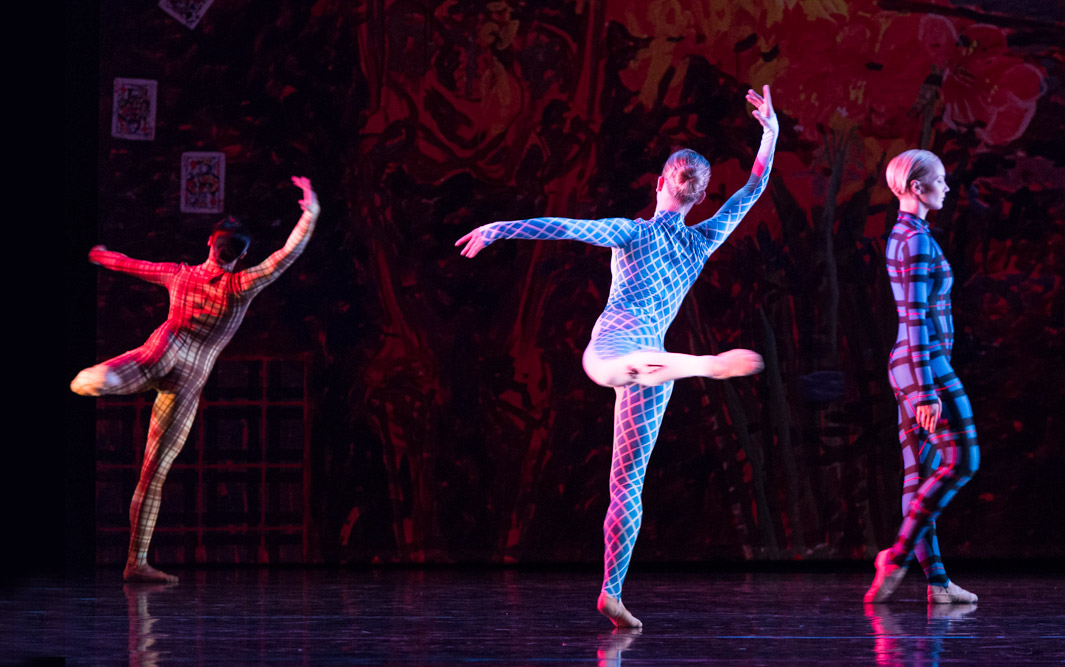
© Foteini Christofilopoulou. (Click image for larger version)
This programme might also be viewed as demonstrating a particular curve in the formal journey of contemporary dance, albeit one taken in reverse and with an interloper for the sake of contrast. The last of the four elements was Sounddance, a soothing burst of psychedelic, geometric movement, created – in 1975 – by that great master of modern art, Merce Cunningham, for himself and his company to dance. It was preceded by three works on an inverted timeline, opening with Lucinda Childs’ reverential mimicry of Cunningham (the aforementioned Four Elements, made in 1990); then Bruce’s Rooster (1991), the odd-one-out in so many ways; and as a post-interval hors d’oeuvre for the Cunningham, there was Richard Alston’s brief solo, Dutiful Ducks, from 1982. Whatever the purpose of putting these four elements together, they provided a stimulating trip down the memory lane of contemporary dance.
Four Elements is so “Cunningham” in style, technique and design with the dancers’ formal postures of straight backs and fixed, bent arms while spiralling through quick, tight spins and launching sharp-edged, arrow-like jumps. Even the evocation of chance through the playing cards depicted on Jennifer Bartlett’s backdrops might reasonably conjure up the thought of Merce. Mistaking this for the choreography of Cunningham would be all-the-more understandable given that Childs’ choreography is so rarely performed here in the UK.
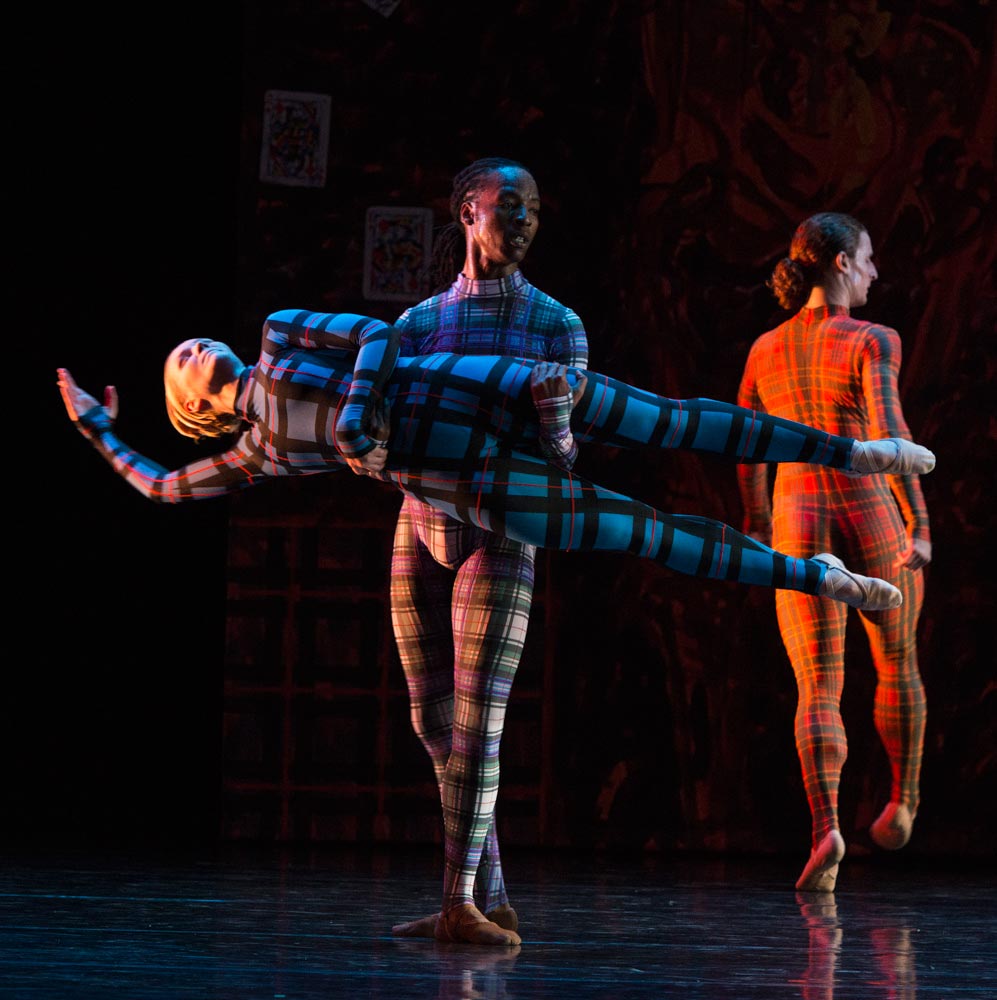
© Foteini Christofilopoulou. (Click image for larger version)
The middle pair of the four elements – Earth and Air – is danced, respectively, by a quartet of women, followed by the same number of men (the repeated idea of four also replayed through the suits of the playing cards featured in the backdrops). Although the tempo of each element varies considerably, the movement is themed in repetitive and reflective sequences, as dancers spin or step one way and then return whence they came, creating imaginary patterns on the stage that I fancied could be tracing the diagonal lines and stripes of flags. The “cradle-to-grave” vista was also referenced in the depiction of skeletons on the backdrop. The whole effect was sophisticated and elegant but details were unmemorable in any specific sense other than as a continual, generic reinforcement of Cunningham’s influence.
Sounddance proved that any pastiche of Cunningham will never capture the man’s ever-innovative approach to dance, since the reality is that his work is always so different. One common thread aligns his choreography to an intuitive appreciation of the need for other creative contributions to elevate dance above the ordinary. Here, these extra elements come in David Tudor’s bubbly, popping, percussive electronic score that resonates from the back of the auditorium and in the golden drapes of a cinema-style curtain at the rear of the stage. It felt as if the audience was enclosed within the work.
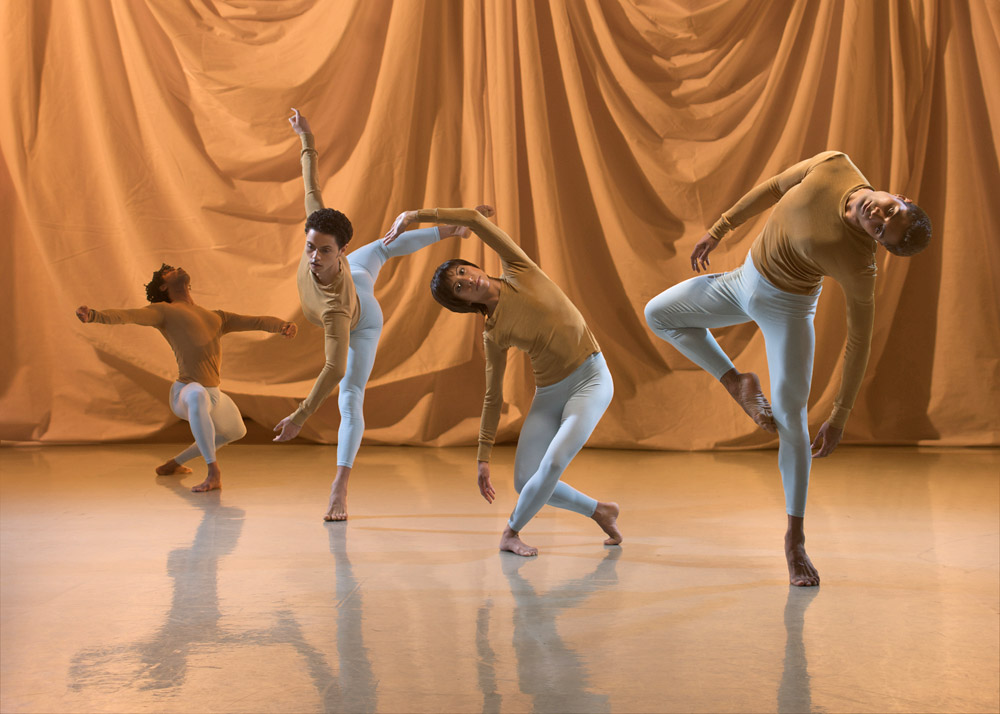
© Chris Nash. (Click image for larger version)
Ten dancers are seemingly sucked from behind Mark Lancaster’s voluminous curtain, beginning with Dane Hurst in the role that Cunningham made for himself. Aided by the surrounding effect of Tudor’s effervescent sounds, it seemed as if we were watching circles of bacteria under a microscope: swirling, joining and parting before – one by one – they are absorbed back into the folds of golden fabric. Cunningham appears to be conducting ecology in choreography built on layered primordial interactions of organisms, either rejecting or conjoining to create biological systems. It is a fascinating work that endures through the careful cultivation of Jeannie Steele’s coaching as evidenced in the cultured performances of these ten outstanding dancers.
Alston’s Dutiful Ducks also owes inspiration to Cunningham’s pervasive influence. The surprising harmony of discipline and disorder that characterises Sounddance is also encapsulated within this brief solo, danced with rich musicality by Dane Hurst, the South African that British critics voted as the best male dancer of 2013. Charles Amirkhanian’s spiky score is based upon the continual rhythmic repetitions of the title’s two words and Alston caresses his dancer’s movement into these vocal patterns like a kayak floating along a rapidly flowing stream.
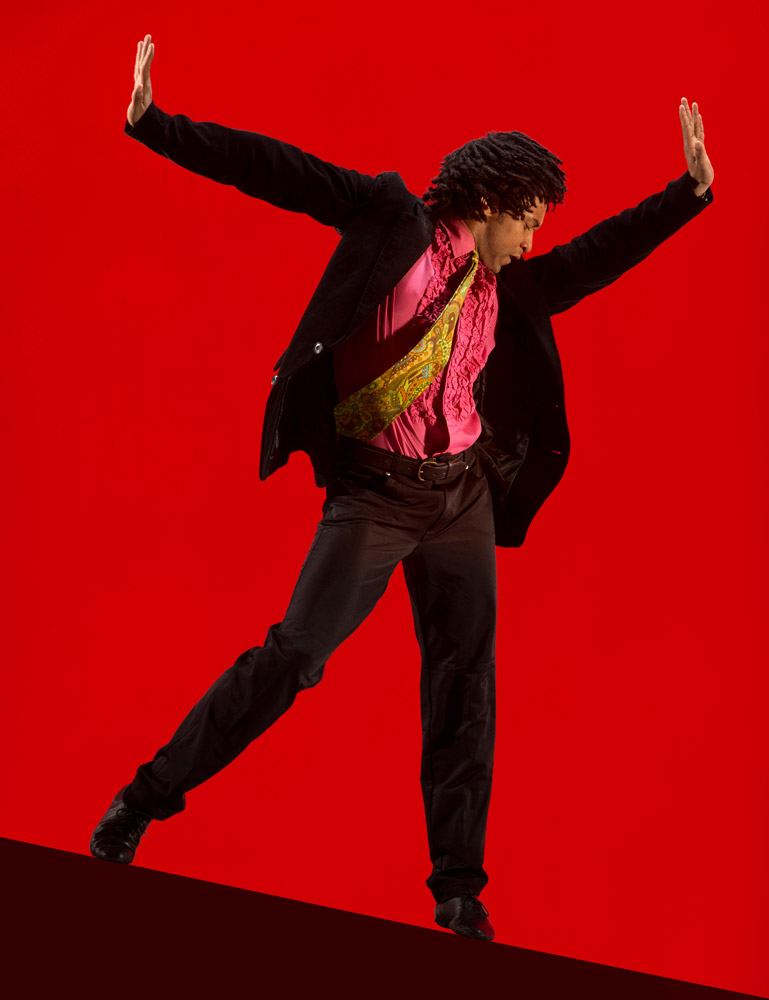
© Hugo Glendinning. (Click image for larger version)
And so to the odd one out: Rooster, performed second on this bill, which Bruce made to celebrate the music of The Rolling Stones, employing eight of their best-known tracks. These are the anthems of any fifty-something’s youth, brought into dance with an intuitive and intimate understanding of their lyrics and musical structures. More to the point, Bruce links these iconic numbers so superbly that he has created an integrated album and not eight separate singles. There’s a battle of the genders going on with Jaggeresque male posturing (so brilliantly characterised in Miguel Altunaga’s Little Red Rooster) played out against resigned female indulgence in group movement that often seem to draw style from the baroque (as does Sounddance). The Rambert dancers keep it fresh and appealing and unlike the now-craggy faces of the famous musicians themselves, this clever and popular number is ageless in their care.
A tremendous repository of academic value is vested in this programme, which should be compulsory viewing for all contemporary dance undergraduates. It’s a brave step to schedule four dance pieces that are each more than 20 years old, without a premiere bristling with newness and expectation lying within the group. But, Rambert’s very own historical project shows that replaying greatest hits will often top the charts.















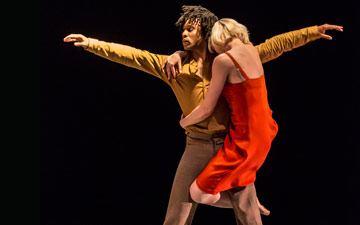

You must be logged in to post a comment.